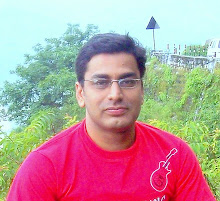Studying genetic variations across the Indian population
Tuesday, October 14, 2008
 The research: The DNA for 75 genes spread across all chromosomes, and one 5.2 million bases long segment of chromosome 22 that houses 49 genes were analysed.
The research: The DNA for 75 genes spread across all chromosomes, and one 5.2 million bases long segment of chromosome 22 that houses 49 genes were analysed. Human Genome Organization (HUGO), which turned 20 years of age in 2008, held the Human Genome Meeting (HGM) at Hyderabad in the last days of September.
Drs Samir Brahmachari of Delhi, Lalji Singh of Hyderabad and Partha Majumder of Kolkata organized HGM 2008. Attended by over 1,000 scientists from over 44 countries, HGM 2008 was the forum where new advances in the field of human genetics were present ed.
Dr Charles Cantor set the mood of the meeting in his plenary talk where he pointed out how the costs of sequencing the genome have plummeted; he suggests that within the next decade, the cost of sequencing an entire human genome would be no more than a few thousand rupees.
Dramatic drop in cost
To get a feel of this, recall that it cost Rs.12,000 crores to do this five years ago. Why do I say this? Because of one of the programmes led by the three Indian musketeers mentioned above. They put together a daring programme in 2003 called the Indian Genome Variation (IGV) consortium. This aims to obtain genetic information on over 4,000 genetic markers from a thousand health and illness-related genes from ethnic and language groups from across the whole of India. The IGV database or IGVdb was released in part at HGM 2008. By studying the genetic variations across the vast populations of India, it aims to address several questions regarding our health and well being. Are there clusters of populations that share genetic predispositions towards certain health conditions? Can the same treatment be given to all people across the country or should there be group-based calibration?
What is the nature and extent of genetic differentiation within and between these clusters? These questions are relevant to India, where people marry and found families and communities based on language, religion and social practices. IGVdb attempts to draw a broad canvas of the health map across India, using DNA-based markers.
Some health conditions depend on what is writ in a single gene. Sequencing the gene and finding errors in it allows us to understand the basis of the condition. But many health conditions depend on more than one gene and are thus complex. Sequencing many of the genes is a harder task. But there is a short cut. Any two unrelated people share 99.5 per cent of the DNA sequences of the chromosomes in their genomes. But one may have the letter A at a particular site in a chromosome while the other may have C. Each of these sites is called a single nucleotide polymorphism, SNP or snip. Each of the two possibilities is called an allele. A series of consecutive alleles on a given chromosome is called a haplotype. In other words, adjacent SNPs that are inherited together are a haplotype. Thus when we analyze the SNP variations between individuals and group, we get an idea of their genetic predispositions. Haplotypes are shared between populations but their frequencies can vary widely. Thus haplotype mapping (HapMap) becomes a useful tool to study a group, cluster or community of people. And this is done by sequencing the DNA of chosen chromosomes and doing SNP analysis around chosen genes. Statistical analysis of the data is then done and the haplotype diversity across populations analyzed and classified. IGV chose about 2,000 people from across India, collected as groups of people from the same ethnic and linguistic groups from six geographic habitats and sociocultural strata (large population, caste based, isolated population, tribes; and special populations, religious groups). This gave them a set of 55 representative populations.Fiftyfive populations
And they analyzed the DNA for 75 genes spread across all chromosomes, and one 5.2 million bases long segment of chromosome 22 that houses 49 genes. This allowed them to analyze the nature and variation in the 55 populations, based on 405 SNPs.
How can we use IGVdb? IGVdb is an attempt at the genetic census of India. It would help us address questions of the type posed above, and answer them with a greater degree of certainty and confidence. For more details, please go to http://www.igvdb.res.in/.



0 comments:
Post a Comment